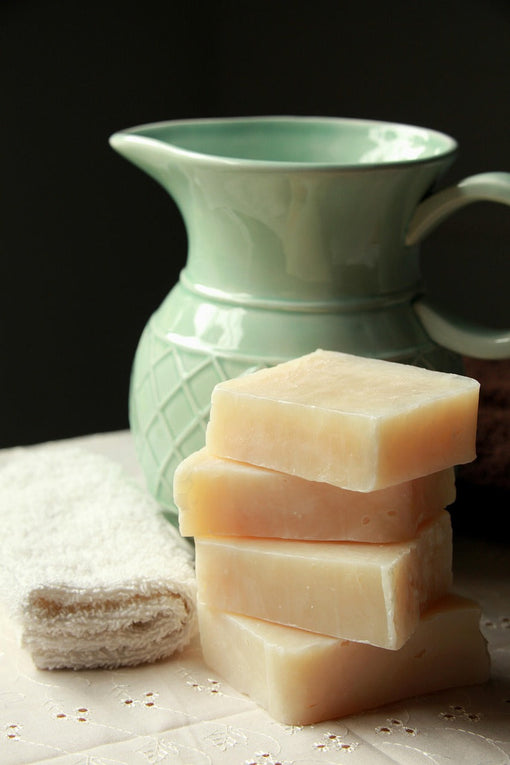
- Article published at:
- Article author: Valerie M. Malla
- Article tag: AumOui Artisan Soap
- Article comments count: 0
Drawer menu
Soap—a staple in our daily lives, yet often overlooked in its complexity. Join us on a journey to uncover the secrets behind this humble yet powerful cleanser. Let's dive into the intriguing world of soap and understand its wonders.
What is Soap? At its core, soap is a cleansing agent that's been used in various forms for centuries to remove dirt, grime, and oils from surfaces, particularly the skin. Although, historically, roots, rocks, leaves, and even dirt and charcoal have been used. In modern society, real soap is a combination of fats or oils and an alkali substance, such as sodium hydroxide (for solid soap) or potassium hydroxide (for liquid soap), resulting in a chemical reaction known as saponification. There is no alkali remaining in the final product where soaps are made by an expert artisan.
The Chemistry of Soap: Saponification is the magical process where fats and oils combine with the alkali to create soap molecules. This process breaks down the fats into fatty acids and glycerin, forming soap that can interact with both water and oil. The formation of bubbles is incidental and not the primary goal. When soap is agitated or mixed vigorously, however, it can create bubbles due to the presence of soap molecules and their interaction with water and air. The lathering ability of soap is influenced by several factors, including the types of oils or fats used, the presence of additives, and the formulation of the soap.
How Does Soap Clean? Soap molecules have a unique structure that enables them to act as emulsifiers, meaning they can surround oil and dirt particles, allowing them to be easily rinsed away with water. Essentially, soap helps lift away dirt and grease from surfaces, including our skin, making it clean and refreshed.
Types of Soap: There's a diverse array of soaps available, each with its own formulation and purpose. From traditional bar soaps to liquid soaps, transparent soaps, and specialized formulations like antibacterial or moisturizing soaps, and specialty soaps like glycerin or Castile soap. They differ in ingredients, formulation, and use. The options are vast.
Natural vs. Commercial Soaps: Natural or handmade soaps often prioritize natural ingredients like natural oils or fats (like olive oil, coconut oil, palm oil), botanicals, and essential oils. In contrast, commercial soaps typically contain harsh detergents, synthetic additives, fragrances, and preservatives. AumOui soaps contain fragrances (free of parabens and phlathaltes), natural colours, exfoliants, and/or adding additional moisturizing agents depending on the desired design and purpose of the soap. In addition, artisanal soaps at AumOui emphasize natural ingredients, unique blends of oils, and botanicals, crafted in small batches to create a personalized and luxurious cleansing experience.
Soap in Hygiene: Soap is an indispensable part of maintaining personal hygiene. Its ability to remove germs, dirt, and oils helps prevent the spread of diseases and keeps us healthy. But, apart from cleansing, AumOui soaps contain only natural ingredients that offer additional benefits like moisturizing, exfoliation, soothing properties, or specific skin treatments depending on the added components.
The Marvels of Soap Next time you lather up, take a moment to appreciate the science and artistry behind that humble bar of soap. From its chemical composition to its cleansing prowess, soap remains an essential companion in our daily lives.
Curious about a specific aspect of soap chemistry or its benefits? Let us know in the comments!
🌿 Shop AumOui Artisan Products
✨ Return to true nature. Return to yourself.
Join the AumOui community and receive seasonal insights, rituals of self-care, exclusive product releases, and quiet inspiration from the garden of nature’s wisdom.
✨ Subscribe to Our Newsletter
Because the journey back to yourself begins with a whisper, when you're ready.